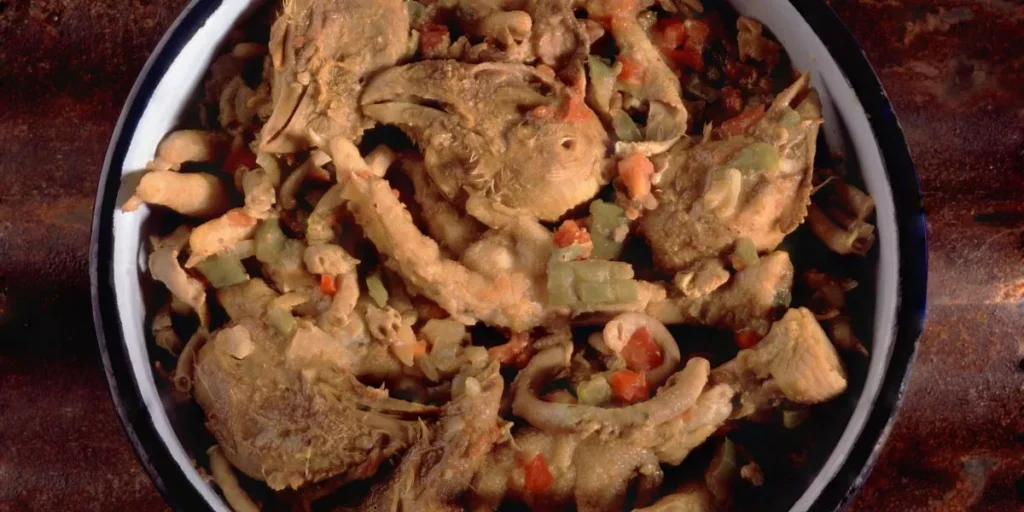
When it comes to mastering the art of cooking African stews, understanding the fundamental ingredients and techniques is crucial. From the vibrant blend of onions, tomatoes, and peppers to the aromatic mix of spices, each element plays a vital role in creating a harmonious flavor profile. The secret lies in balancing these components to achieve a symphony of tastes that will transport your palate to the heart of Africa. But what truly sets African stews apart are the diverse regional influences that add a touch of uniqueness to each recipe, offering a tantalizing journey through a tapestry of flavors waiting to be explored.
Essential Ingredients for African Stews
To make authentic African stews, you must gather the essential ingredients that will infuse your dish with rich flavors and vibrant colors. Start by selecting the key components that form the base of most African stews. Onions, tomatoes, and peppers are fundamental in creating the flavor foundations for these dishes. The onions provide a sweet undertone, while the tomatoes offer a slight tanginess, and the peppers bring a hint of heat.
In addition to this trio, spices play a crucial role in African stews. Common spices include paprika, cumin, coriander, and turmeric, which add depth and complexity to the dish. Don’t be afraid to experiment with different spice combinations to find the perfect balance for your taste preferences.
To further enhance the flavors, consider incorporating ingredients like garlic, ginger, and fresh herbs such as cilantro or parsley. These aromatic additions will elevate the overall taste profile of your stew and give it an authentic African flair. Remember, the key to a delicious African stew lies in the careful selection and combination of these essential ingredients.
Traditional Cooking Techniques
For mastering African stews, understanding traditional cooking techniques is key. One common technique is the slow simmering of ingredients in a pot over low heat for an extended period. This method allows the flavors to meld together and creates a rich, hearty stew.
Another important technique is the use of a mortar and pestle to grind fresh herbs, spices, and vegetables into a paste before adding them to the stew. This enhances the depth of flavors in the dish.
In many African cultures, stewing involves cooking meat and vegetables together in a single pot. This technique not only simplifies the cooking process but also infuses the stew with the flavors of the ingredients. Additionally, marinating meat in a blend of spices and herbs before cooking is a common practice. This step adds complexity and richness to the final dish.
Furthermore, traditional African cooking often involves using natural thickeners like cassava flour or groundnuts to achieve the desired consistency in stews. These techniques have been passed down through generations and are integral to the authentic preparation of African stews.
Regional Variations in Stew Recipes
Exploring the diverse culinary landscape across Africa reveals a myriad of regional variations in stew recipes. Each region boasts unique flavors, ingredients, and cooking techniques that contribute to the rich tapestry of African cuisine.
In West Africa, dishes like Nigerian Egusi stew or Ghanaian Groundnut stew showcase the use of ground melon seeds or peanuts as a base, creating a creamy and nutty flavor profile.
Moving to East Africa, you’ll find dishes like Ethiopian Doro Wat, a spicy chicken stew flavored with berbere spice blend, and Tanzanian Plantain and Bean stew, which combines sweet plantains with hearty beans in a savory sauce.
Southern Africa offers dishes like South African Tomato Bredie, a tomato-based stew with lamb or beef, and Zimbabwean Peanut Butter stew, featuring a creamy and nutty sauce made with peanut butter.
North African stews such as Moroccan Tagine or Algerian Chorba often incorporate aromatic spices like cumin, cinnamon, and saffron, adding a warm and fragrant dimension to the dishes.
Embracing these regional variations allows you to experience the diverse and vibrant flavors of African stews.
Tips for Perfecting Your Stew Flavor
As you aim to elevate your stew-making skills, honing in on the flavors is key to perfecting your stew. To enhance the flavor profile of your African stews, consider incorporating a variety of aromatic ingredients such as onions, garlic, ginger, and fresh herbs like cilantro or parsley. These ingredients not only add depth and complexity to the stew but also infuse it with a rich and fragrant aroma.
Experiment with different spice blends to tailor the flavor to your liking. Common spices used in African stews include cumin, coriander, paprika, and chili powder. Adjust the quantities of these spices based on your preference for a milder or spicier stew.
Don’t underestimate the power of umami-rich ingredients like tomatoes, tomato paste, soy sauce, or Worcestershire sauce. These ingredients can intensify the savory notes in your stew and create a more robust taste profile.
Lastly, taste your stew as it simmers and adjust the seasoning accordingly. Adding a pinch of salt or a squeeze of lemon juice towards the end of cooking can help balance the flavors and elevate your stew to perfection.
Trending Products














